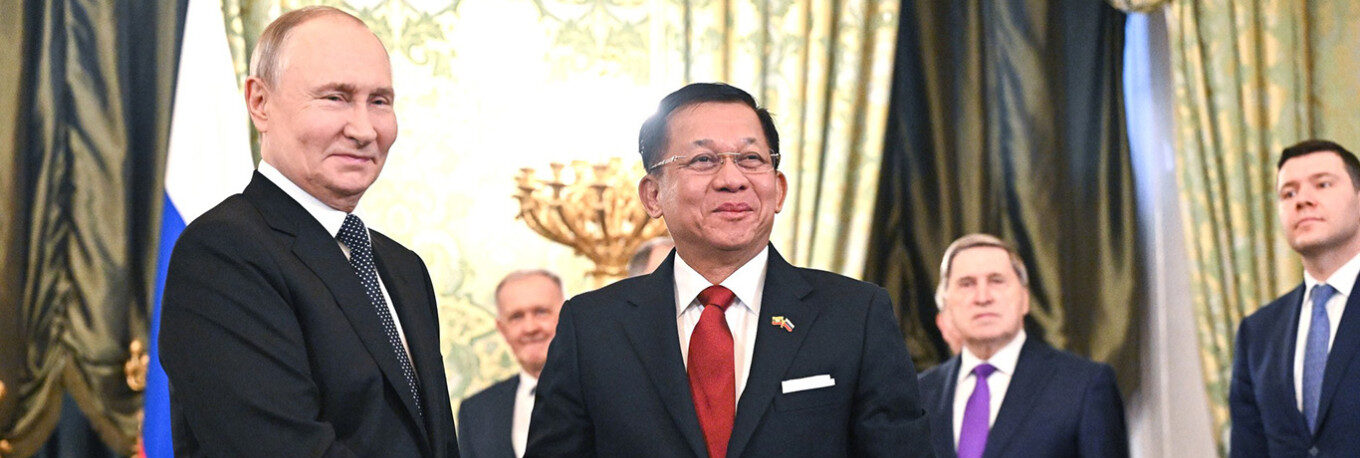Since the military coup of 2021, Myanmar has been embroiled in a protracted civil war, with the ruling junta struggling to maintain its hold over the country. While the opposition’s Spring Revolution has reclaimed large portions of territory, the junta still has a grip on power through the use of force, forced conscription and reliance on foreign support. From British colonial rule to Cold War-era alignments, Myanmar has always been a battleground for competing powers, and with the United States stepping back from its involvement in the region, Myanmar’s geopolitical dynamics have been widely influenced by its relationships with China and Russia. These ties, rooted in decades of political and economic cooperations, have shaped the current geopolitical landscape of the region.
The legacy of colonialism and its impact on the ongoing conflicts in Myanmar
Myanmar’s ongoing conflicts and the involvement of foreign powers are deeply rooted in the legacy of British colonialism. During colonial rule, the British nurtured a “divide and rule” policy by exacerbating tensions between ethnic minorities, especially the Karen and the Bamar, who are still against each other to this day. These divisions, alongside the central government’s marginalization of ethnic minorities, led to decades of insurgencies and armed conflict after the independence in 1949. The military, which seized power in 1962, capitalized on this instability. Today, the junta’s reliance on foreign powers like China and Russia, which have strategic interests in Myanmar, has prolonged its grip on power. These external interventions are a continuation of historical dynamics, as Myanmar’s resources and geopolitical location remain crucial to foreign powers, particularly in the context of the legacy of colonialism that continues to fuel the internal instability in the country.
An In-Depth Look into China and Myanmar Relations
In the early 2000s, China invested heavily in Myanmar’s infrastructure, especially with the construction of oil and gas pipelines connecting Kyaukpyu in Rakhine State to Kunming in Yunnan Province. These pipelines, completed in 2015, were designed to provide China with strategic access to the Indian Ocean in order to reduce its reliance on the Strait of Malacca for energy imports. However, Beijing’s support for large-scale projects, such as the Kyaukpyu deepwater port, has been met with local resistance and concerns over sovereignty and economic dependency. But since the military took power, China’s involvement has gone beyond economic cooperation by supplying the junta with drones and jammers, as well as sending private military contractors to Kyaukphyu for instance. China’s diplomatic stance following Myanmar’s 2021 military coup has been cautious, aiming to balance its strategic interests with regional stability, but the dependence of the junta is undeniable, reflecting the country’s interest to secure its investments in Myanmar.
Russia-Myanmar Relations: A Historical Perspective
While China shares a predominantly economic relationship with Myanmar, Russia’s engagement with the country was characterized by military cooperation from the very start. For decades, Myanmar got significant military hardware from Russia, including MiG-29 fighter jets and Mi-24 helicopter gunships. These acquisitions have bolstered Myanmar’s defense capabilities and allowed a diversification of its military partnerships beyond China. This relationship deepened further following the 2021 coup, with Russia emerging as a key ally to Myanmar’s military junta. High-level visits, such as General Min Aung Hlaing’s trip to Moscow in March 2025, underscore the strengthening ties between the two. During this visit, discussions encompassed trade, military cooperation, and potential nuclear energy projects, reflecting the Russian intent on expanding its influence in Southeast Asia.
The Structural Challenges due to these ties
Myanmar’s strategic location has historically positioned it at the crossroads of major powers seeking influence in the region. The nation’s colonial past under British rule, followed by a journey through military dictatorship and brief democratic transitions, has left a legacy of internal conflicts and economic challenges. The involvement of China and Russia in Myanmar must be understood within this historical framework. China’s investments constitute a major part of its Belt and Road Initiative, aiming to enhance connectivity and secure strategic interests, while Russia’s military support reflects its strategy to foster alliances counterbalancing Western influence. These engagements, while offering economic and military benefits to Myanmar, also threaten to exacerbate internal divisions and entrench authoritarian governance. The international community’s response, particularly from Western nations, has been critical and led to sanctions (for example in October 2024, the renewal of assets freeze and prohibition to make funds available by the EU) and diplomatic isolation. This environment has pushed Myanmar’s military leadership to seek support from allies like China and Russia, creating a complex web of dependencies and alignments.
Sources
https://www.chinacenter.net/2020/china-currents/19-3/a-relationship-on-a-pipeline-china-and-myanmar/


Comments are closed